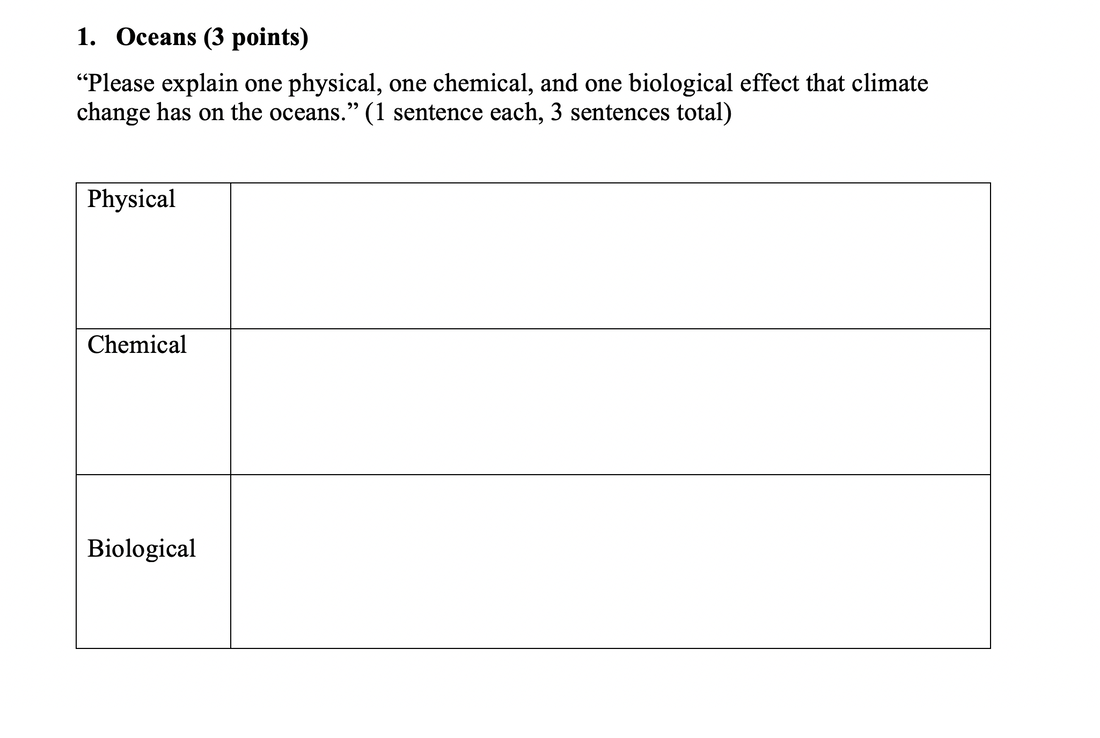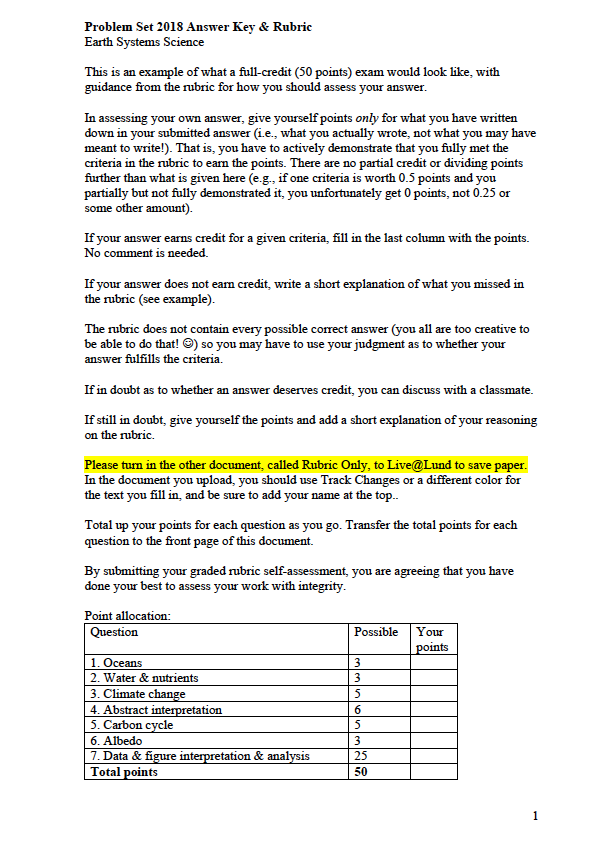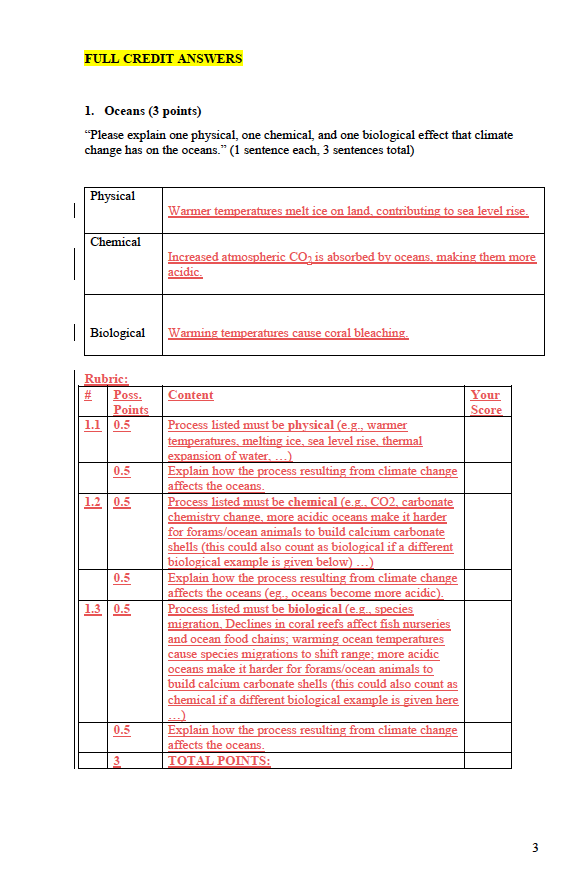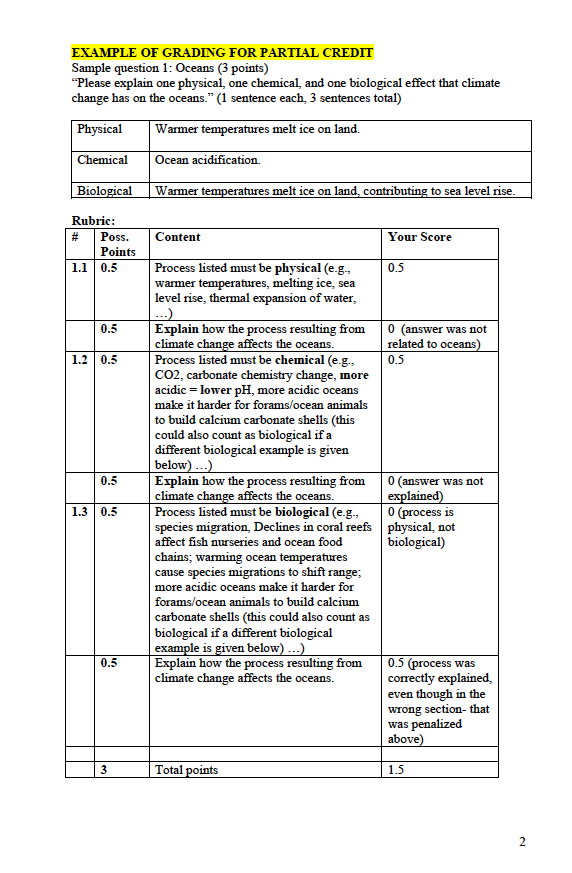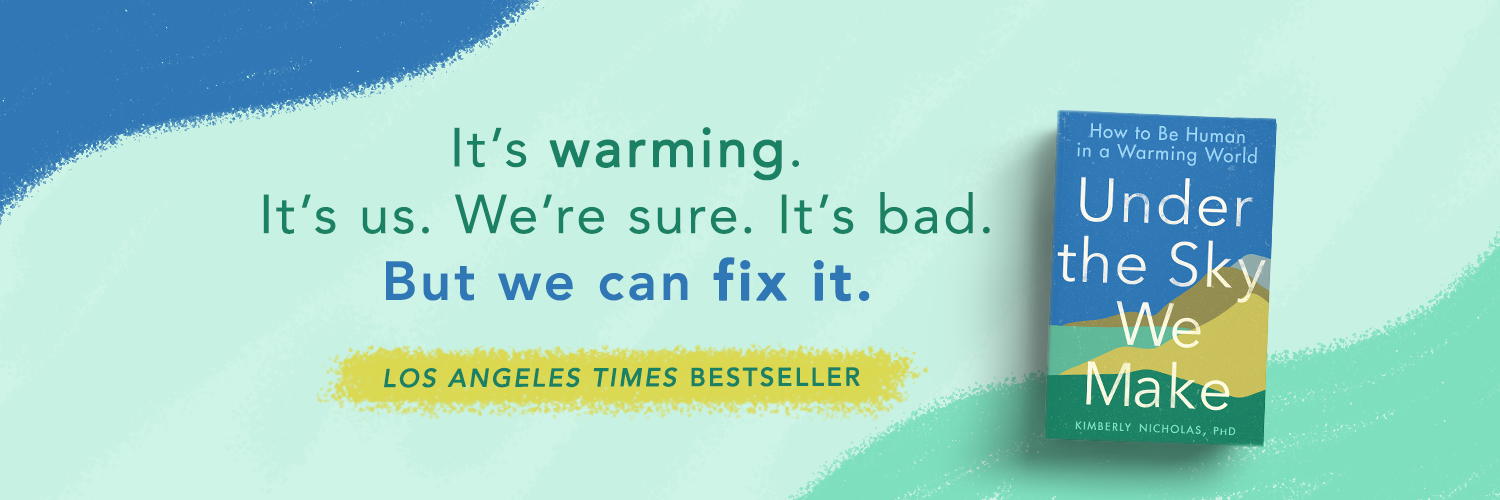Simplified Student Self Grading
You teach for a while. You figure stuff out. Here's my simple version of student self grading*. (For a version that uses peer grading as an additional learning exercise, as well as a check on self-grading, see here).
In a nutshell (see illustrations below):
1. Write exam
2. Write exam rubric: allocation of points and what's needed to get how many points, along with examples of full and partial credit answers and how to assess.
3. Give students exam (not rubric!)
4. Students submit exam. (You can look them over a bit to potentially update rubric with eg common answers/misconceptions).
5. Give students rubric, which explains how to allocate the points, and a template exam they use to grade themselves.
6. Students turn in self-grade.
*Why self grading? "According to a meta-analysis of over 800 meta-analyses, involving over 50,000 studies and 250 million students, the characteristic that produced the most positive outcomes on student learning (nearly 50% larger effect than the next best characteristic, and more than three times as effective as the average strategy tested) was when students self-report grades (Hattie, 2009). It appears that this feature gets students to become more reflective and therefore deeper learners, in effect teaching them how to learn by encouraging them to better monitor, evaluate, and assess themselves, looking for evidence of how they are doing, keeping an eye out for errors and looking for ways to work more effectively (Biggs and Tang, 2011)." (Nicholas, 2011 Learning and Teaching in Higher Education course report).
In a nutshell (see illustrations below):
1. Write exam
2. Write exam rubric: allocation of points and what's needed to get how many points, along with examples of full and partial credit answers and how to assess.
3. Give students exam (not rubric!)
4. Students submit exam. (You can look them over a bit to potentially update rubric with eg common answers/misconceptions).
5. Give students rubric, which explains how to allocate the points, and a template exam they use to grade themselves.
6. Students turn in self-grade.
*Why self grading? "According to a meta-analysis of over 800 meta-analyses, involving over 50,000 studies and 250 million students, the characteristic that produced the most positive outcomes on student learning (nearly 50% larger effect than the next best characteristic, and more than three times as effective as the average strategy tested) was when students self-report grades (Hattie, 2009). It appears that this feature gets students to become more reflective and therefore deeper learners, in effect teaching them how to learn by encouraging them to better monitor, evaluate, and assess themselves, looking for evidence of how they are doing, keeping an eye out for errors and looking for ways to work more effectively (Biggs and Tang, 2011)." (Nicholas, 2011 Learning and Teaching in Higher Education course report).
